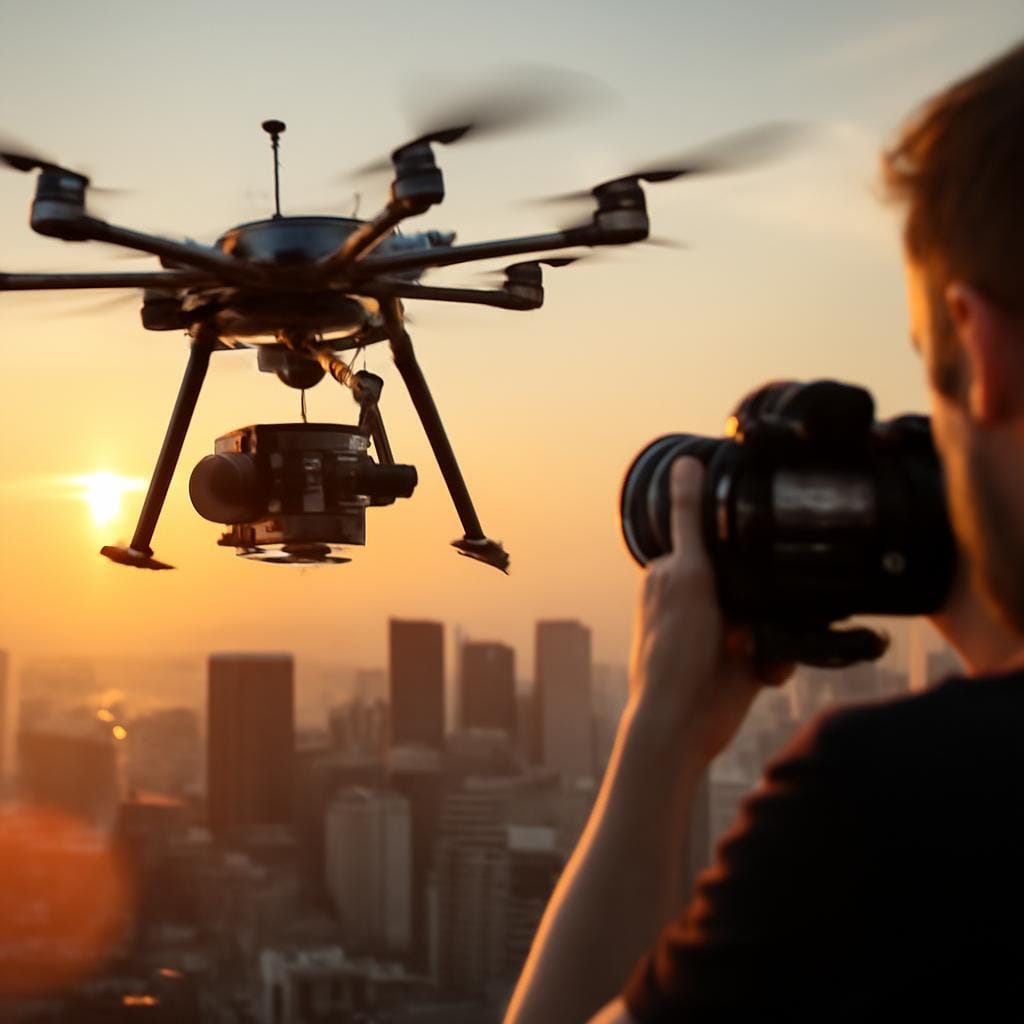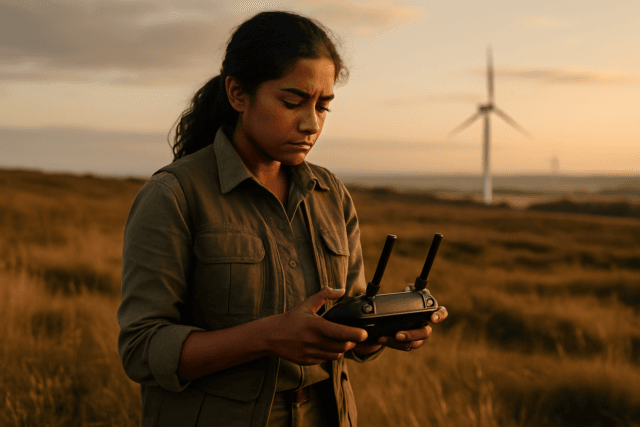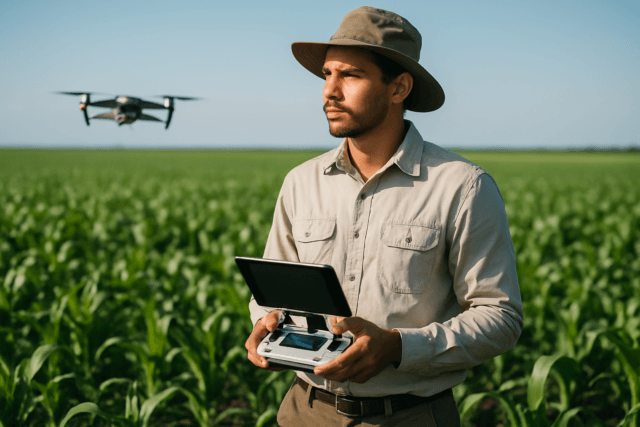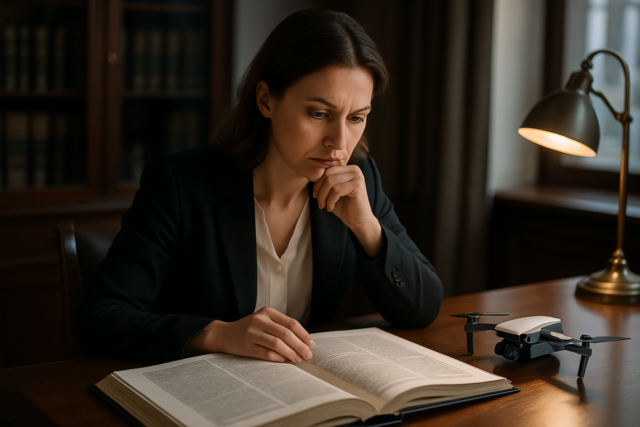Drones have revolutionized the way we capture the world, offering breathtaking aerial perspectives previously reserved for big-budget productions. In the realm of advertising, drone commercial videos have become a powerful tool for brands to showcase their products, services, and locations in a visually stunning and engaging manner. This article explores the art of drone commercial video production, highlighting some of the best examples, key techniques, and essential considerations for creating effective drone commercials.
Why Use Drones for Commercial Videos?
Drone videography offers several advantages over traditional filming methods:
- Unique Perspectives: Drones capture angles and viewpoints impossible to achieve with ground-based cameras, providing a fresh and captivating look.
- Cost-Effectiveness: Compared to helicopter or airplane filming, drone operations are significantly more affordable.
- Flexibility and Agility: Drones can navigate tight spaces and capture dynamic shots with ease.
- Enhanced Visual Appeal: High-resolution cameras and stabilized gimbals ensure smooth, cinematic footage.
- Engagement: Aerial footage is naturally engaging and helps to capture audience attention quickly.
Key Elements of Effective Drone Commercial Videos
Creating a successful drone commercial requires careful planning and execution. Here are some essential elements to consider:
1. Storytelling
- Clear Narrative: Every great commercial tells a story. Define the message you want to convey and how drone footage can enhance it.
- Emotional Connection: Use visuals and music to evoke emotions that resonate with your target audience.
- Brand Integration: Subtly incorporate your brand’s identity and values into the storyline.
2. Visual Composition
- Rule of Thirds: Apply this basic principle of photography to create balanced and visually appealing shots.
- Leading Lines: Use natural or artificial lines to guide the viewer’s eye towards the subject.
- Symmetry and Patterns: Look for symmetrical compositions or repeating patterns that add visual interest.
- Framing: Use elements in the foreground to frame the subject and create depth.
3. Drone Movement and Camera Techniques
- Reveal Shots: Gradually reveal a subject or location by flying backwards or ascending.
- Fly-Throughs: Create a sense of immersion by flying through buildings, landscapes, or events.
- Orbit Shots: Circle around a subject to showcase it from all angles.
- Tracking Shots: Follow a moving subject, such as a car, boat, or athlete.
- Dolly Zoom (Vertigo Effect): Combine drone movement with zoom adjustments to create a disorienting effect.
4. Music and Sound Design
- Complementary Music: Choose music that matches the tone and pace of your video.
- Sound Effects: Add realistic sound effects to enhance the viewing experience.
- Voiceover: Use a clear and engaging voiceover to narrate the story and highlight key messages.
5. Editing and Post-Production
- Color Grading: Adjust the colors to create a consistent and visually appealing look.
- Stabilization: Ensure smooth footage by using post-production stabilization techniques.
- Transitions: Use seamless transitions to connect different shots and scenes.
- Visual Effects: Add visual effects to enhance the realism or create a unique style.
- Text and Graphics: Incorporate text and graphics to provide additional information or branding elements.
Inspiring Examples of Drone Commercial Videos
Numerous brands have successfully utilized drone footage in their marketing campaigns. Here are some notable examples:
1. Real Estate and Property
- Showcasing Property Features: Drones offer a comprehensive view of residential and commercial properties, highlighting key features like landscaping, amenities, and location.
- Neighborhood Overview: Aerial shots can illustrate the property’s proximity to schools, parks, shopping centers, and other attractions.
- Construction Progress: Drones can document the progress of construction projects, providing investors and stakeholders with regular updates.
Drone video enables you to capture compelling aerial footage of your property. Showcase buildings, highlight property features, and display the nearby area.
2. Tourism and Travel
- Destination Promotion: Drones capture the beauty and grandeur of travel destinations, enticing viewers to visit.
- Hotel and Resort Tours: Aerial tours can showcase the amenities and surroundings of hotels and resorts, providing potential guests with a virtual experience.
- Adventure Activities: Drones can capture thrilling footage of adventure activities like skiing, surfing, and hiking.
3. Automotive
- Dynamic Car Shots: Drones can follow cars on scenic roads, capturing dynamic shots that emphasize their speed and handling.
- Showcasing Design: Aerial footage can highlight the car’s design and features from unique perspectives.
- Off-Road Capabilities: Drones can showcase the off-road capabilities of SUVs and trucks in challenging terrains.
4. Food and Beverage
- Restaurant Ambiance: Drones can capture the ambiance of restaurants and cafes, showcasing their location, decor, and outdoor seating areas.
- Food Preparation: Aerial shots can provide a unique perspective on the food preparation process, highlighting the freshness and quality of ingredients.
- Delivery Services: Drones can be used to humorously or futuristically depict delivery services. All of a sudden, there’s drones making pizza deliveries akin to the Amazon delivery drones that we never got.
5. Sports and Events
- Event Coverage: Drones can capture the scale and excitement of sporting events, concerts, and festivals.
- Athlete Tracking: Aerial footage can follow athletes during races, competitions, and training sessions.
- Highlighting Performances: Drones can capture stunning shots of athletes performing tricks, stunts, and other impressive feats.
6. Industrial and Construction
- Site Inspections: Drones can conduct site inspections of construction projects, power plants, and other industrial facilities.
- Progress Monitoring: Aerial footage can document the progress of construction projects over time.
- Safety Assessments: Drones can be used to assess safety hazards and potential risks on industrial sites.
UK Drone Filming Companies
- Upper Cut Productions: Specializes in drone aerial filming and drone photography using the latest technology for the film and TV industry.
- DroneScope: Pioneers in drone filming, aerial photography, and FPV services, with crews based in London, Bristol, and Cornwall.
- CLOUDVISUAL: Delivers drone precision, innovation, and reliability across London and the UK for film, photography, and surveying.
- The Drone Company: A leading drone filming and photography company in the UK, offering creative content and high-level service.
- Drone Photography Services: Provides aerial photography and filming services in Devon, Cornwall, the South West, and throughout the UK.
Legal and Safety Considerations
Before undertaking any commercial drone project in the UK, it is essential to comply with all relevant regulations and safety guidelines:
- CAA Approval: Obtain the necessary permissions from the Civil Aviation Authority (CAA) for commercial drone operations.
- Insurance: Secure adequate public liability insurance to cover any potential damages or injuries.
- Privacy Laws: Respect privacy laws and avoid filming private property without permission.
- No-Fly Zones: Be aware of restricted airspace and no-fly zones, such as airports and military installations.
- Weather Conditions: Avoid flying in adverse weather conditions, such as strong winds or heavy rain.
- Visual Line of Sight: Maintain a clear visual line of sight with the drone at all times.
- Night Flying: Obtain special permission for night flying operations.
Tips for Capturing Killer Drone Video Footage
- Plan Your Shots: Before you even take off, plan out the specific shots you want to capture. Scout the location, consider the time of day, and visualize the final product.
- Use ND Filters: Neutral density (ND) filters reduce the amount of light entering the camera, allowing you to use wider apertures and slower shutter speeds for smoother, more cinematic footage.
- Shoot in 4K: Capture footage in 4K resolution to provide flexibility in post-production and ensure a high-quality final product.
- Fly Smoothly: Practice smooth and controlled drone movements to avoid jerky or shaky footage.
- Experiment with Angles: Don’t be afraid to experiment with different angles and perspectives to create unique and visually interesting shots.
- Capture B-Roll: Shoot plenty of B-roll footage, such as establishing shots, close-ups, and time-lapses, to add depth and variety to your video.
- Monitor Your Battery: Keep a close eye on your drone’s battery level and land before it runs out of power.
Drone commercial videos offer a powerful way to showcase products, services, and locations from a unique and captivating perspective. By following the tips and techniques outlined in this article, you can create drone commercials that engage viewers, enhance your brand, and drive results. Always prioritize safety and compliance with regulations to ensure a successful and responsible drone filming operation.





